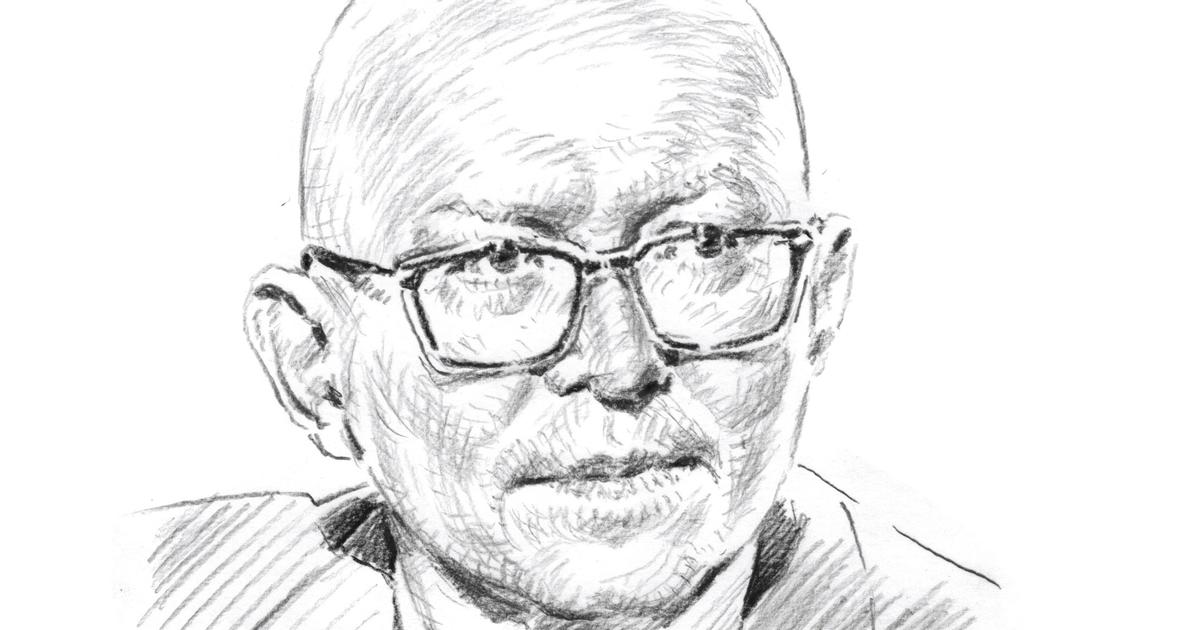Saussure's Journey to the Top of Mont Blanc, by Marquard Wocher.
The guide company of Chamonix, a reference town at the foot of Mont Blanc (4,808 m), has put on a gala this summer to celebrate 200 years of existence, which is also, but only in a certain way, the party of mountaineering. It is assumed that the gesture of climbing mountains for the sheer pleasure of conquering them, of measuring up to their whims, traps and challenges, was born exactly on August 8, 1786 when Jacques Balmat, in the role of guide, and the doctor Michel Paccard, in that of instigator, they achieved the first ascent of Mont Blanc. It was a tragedy, the death in the same accident of the guides Auguste Tairraz, Pierre Balmat and Pierre Carrier, in 1821, which accelerated the creation of the guide company to help their widows and children and to distribute the incipient work fairly.Climbing mountains quickly became a business. However, it all started as a game, entertainment invented by the bourgeoisie.
Mountains have always been out there, and being there, you could climb them, as George Mallory said when asked in the early 1900s why he wanted to be the first to reach the top of Everest. Mountains have always been there to frighten human beings, to stimulate their imagination, to attest to their indifference, but climbing, subduing, understanding or challenging them is an extremely recent matter, the result of the combination of various factors that took centuries to occur. . Shepherds, hunters, enlightened or curious had already climbed from prehistoric times to many mountains, the simple ones, those that only required walking on the grass, the earth or the stones to reach their highest point, but their momentum was inevitably stopped before the great difficulties,especially those with glaciers and perpetual snow. The most daring came to look to the high mountain to hunt for some unknown treasure. No one was after the glory of the top: reaching the top was simply meaningless, worthless. That would come much later, very recently, really. The first maps left a blank space to locate mountains, like deserts that humans do not explore except to move from one point to another. With this, stepping on the perpetual snow was scary: no one knew what can happen in white space, no one needs to expose themselves, no one had missed anything up there ... so with the eighteenth century about to die, the great mountains were still unspoiled. , even in the heart of Europe.The most daring came to look to the high mountain to hunt for some unknown treasure. No one was after the glory of the top: reaching the top was simply meaningless, worthless. That would come much later, very recently, really. The first maps left a blank space to locate mountains, like deserts that humans do not explore except to move from one point to another. With this, stepping on the perpetual snow was scary: nobody knew what can happen in white space, nobody needs to expose themselves, nobody had missed anything up there ... so with the eighteenth century about to die, the great mountains were still virgin , even in the heart of Europe.The most daring came to look to the high mountain to hunt for some unknown treasure. No one was after the glory of the top: reaching the top was simply meaningless, worthless. That would come much later, very recently, really. The first maps left a blank space to locate mountains, like deserts that humans do not explore except to move from one point to another. With this, stepping on the perpetual snow was scary: no one knew what can happen in white space, no one needs to expose themselves, no one had missed anything up there ... so with the eighteenth century about to die, the great mountains were still unspoiled. , even in the heart of Europe.it had no value whatsoever. That would come much later, very recently, really. The first maps left a blank space to locate mountains, like deserts that humans do not explore except to move from one point to another. With this, stepping on the perpetual snow was scary: no one knew what can happen in white space, no one needs to expose themselves, no one had missed anything up there ... so with the eighteenth century about to die, the great mountains were still unspoiled. , even in the heart of Europe.it had no value whatsoever. That would come much later, very recently, really. The first maps left a blank space to locate mountains, like deserts that humans do not explore except to move from one point to another. With this, stepping on the perpetual snow was scary: no one knew what can happen in white space, no one needs to expose themselves, no one had missed anything up there ... so with the eighteenth century about to die, the great mountains were still unspoiled. , even in the heart of Europe.no one needs to expose themselves, no one had missed anything up there ... so with the eighteenth century about to die, the great mountains were still unspoiled, even in the heart of Europe.no one needs to expose themselves, no one had missed anything up there ... so with the eighteenth century about to die, the great mountains were still unspoiled, even in the heart of Europe.
Among the first foreign visitors to the Chamonix Valley were some Englishmen who traveled armed to the teeth, convinced as they were that the place was infested with thieves. Seduced by some exuberant glaciers that spilled over the valley floor, the English did good publicity that immediately caught the attention of nobles and bourgeois, who knew how to see a reason to go where no one had gone. An enthusiastic like few others, the Swiss aristocrat, geologist and naturalist, Horace Bénédict de Saussure became obsessed with Mont Blanc and in 1760 offered a reward to those who achieved their first ascent. The 'chamoniards' Paccard and Balmat are the first, 16 years later, but Saussure (and the 18 guides who accompanied him) would reach his peak a year later to be crowned the father of mountaineering.The bourgeoisie lead not for lack of attitude but because they extend to the mountains their habit of traveling and living with servants. Hunters, stone seekers, shepherds or farmers open the way, offer their experience in rough terrain, their tricks that make them essential: pieces of metal in the soles, long and firm poles, an ax in hand to carve steps in the snow It lasts… They also carry the backpack, food and whatever is necessary for the one who pays them to walk without weight. Overnight, the bourgeoisie have manufactured a reason to go to the mountain: to discover its peaks in the name of science, measurements of any kind, cartography, but deep down the desire to do so is masked for its own sake. And those who accompany the bourgeoisie do so convinced by the promise of generous pay.
In 1904, the Marquis Pedro Pidal tied himself with his exclusive rope bought in London to pastor Gregorio Pérez Demaría, known as El Cainejo, to sign an amazing first ascent to Naranjo de Bulnes or Picu Urriellu, the colossus of the Picos de Europa.
Much earlier, in the Pyrenees, in 1802, Baron Louis Ramond de Carbonnières discovered Monte Perdido and became the father of Pyrenees.
More about El Montañista
Adventure was at home
What to do with corpses in the Himalayas
In 1979, the professor of ancient history Paul Veyne published in the magazine
L´Histoire
a text that traces the first steps of mountaineering at the behest of the bourgeoisie: “In 1920 the bourgeoisie realized that they could have dispensed with guides long before: the great contemporary mountaineering begins, the one that dispenses with guides. Is it missing lackeys? Not at all: under the name of sport, physical activity is suddenly considered honorable. Immediately, the technique improves and both the crampons and the sixth grade in climbing arrive ”. If mountaineering requires a certain physical activity, it is not born as a sport to use but as an act where skill is admired not so much as courage, it is an activity of exploration of an unknown world that, with the passage of time, many it will serve as a psychological challenge or introspection exercise.
Mountaineering started as a game of intellectuals who had time, imagination and the right to invent, as Veyne explains in his text, but in the 20th century the marginal public also embraced an activity whose fascinating echoes had already fed paintings, photographs and pages of literature. Between 1960 and the late 1980s, gigantic advances were made in the world of mountaineering and climbing brought by individuals of all social classes. Many of them shared two passions: mountains and drugs. All fell under the spell of an entertainment in which neither hardships nor mortal dangers diminished the pleasure extracted, the charm of daring, of discovering, of feeling in communion with the natural environment. The passion for the mountains democratized, the highest peaks reached, the wildest goals achieved,the most attractive challenge seems to be to continue explaining convincingly (never definitively) what those who feel the desire to return again and again find up there.
You can follow EL PAÍS DEPORTES on
and
, or sign up here to receive
our weekly newsletter
.

/cloudfront-eu-central-1.images.arcpublishing.com/prisa/QXUD4LVZWFH6POLWVLUJKRV6BY.jpg)







